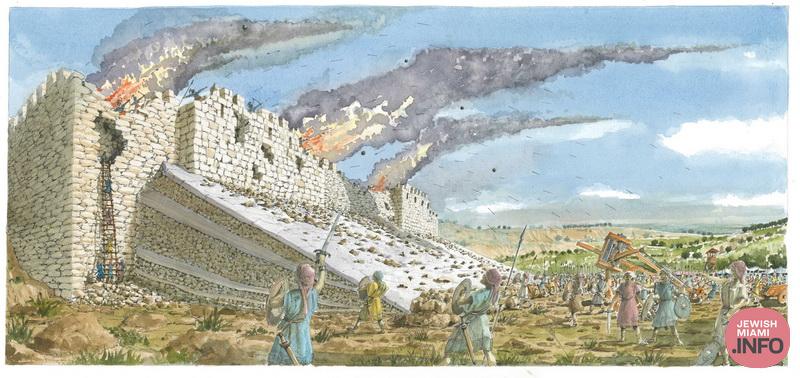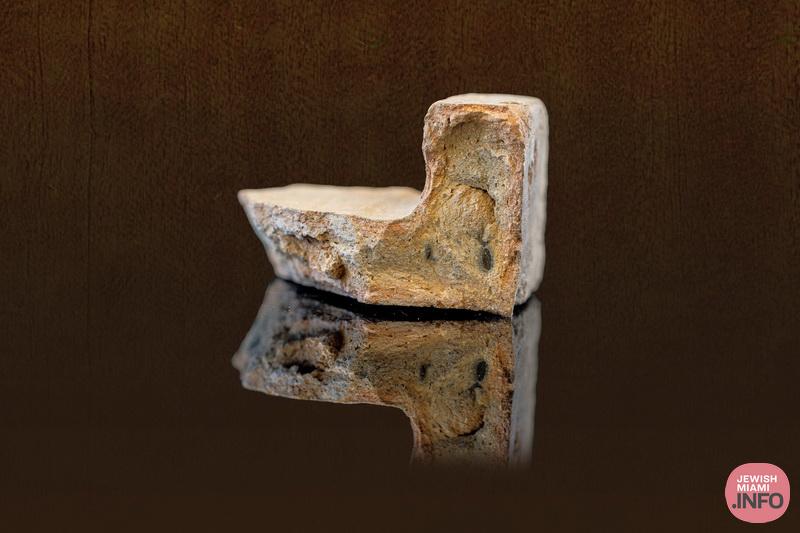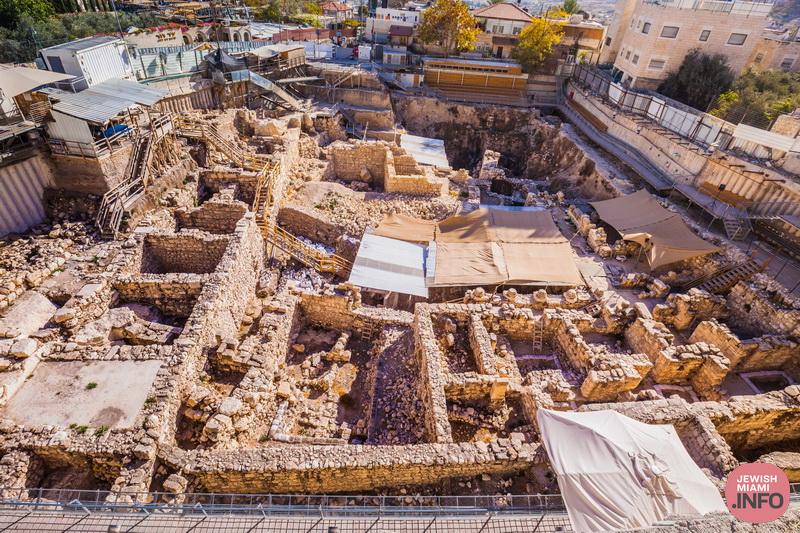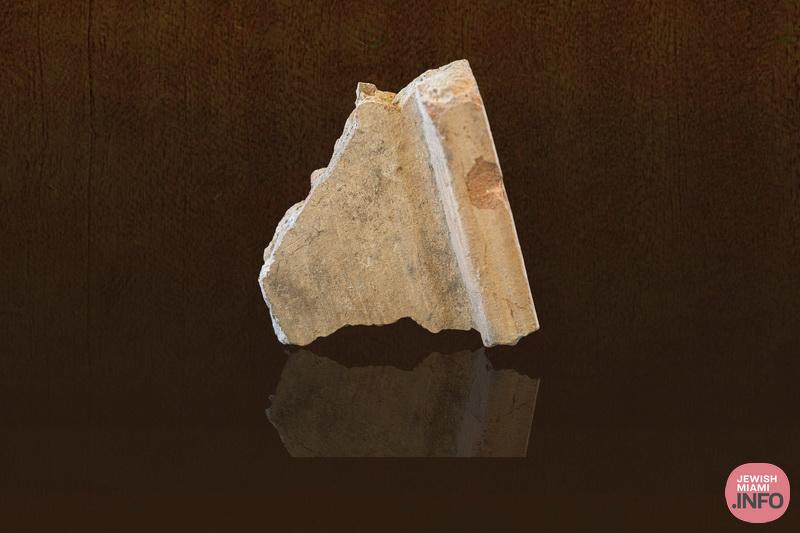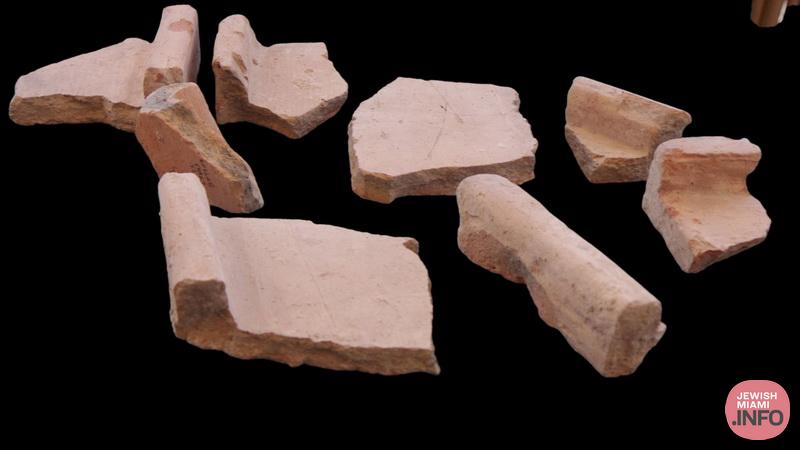
Ancient Roofing Tiles From the Time Of King Antiochus IV Discovered In Eretz Yisroel
The most ancient rooftiles found in the Land of Israel were discovered in the City of David, and they were first used here at the time of the Greek Seleucid king Antiochus IV, the oppressive ruler from the story of Hanukkah.
The finds will be presented to the public at the Israel Antiquities Authority Conference: “In Those Days at This Time –The Hasmoneans are Coming,” which will take place this coming Monday, 11th December 2023, on Hannuka in Jerusalem. Admission free.
Greetings from Antiochus Epiphanes! The earliest evidence to date for the use of ceramic rooftiles in the Land of Israel has been uncovered in the City of David National Park surrounding the walls of the Old City of Jerusalem.
Sixteen Hellenistic-period rooftile fragments, dating from the 2nd century BCE, were found in archaeological excavations conducted by the Israel Antiquities Authority and Tel-Aviv University at the Giv‘ati Parking Lot Excavations which are funded by the City of David Foundation. According to the researchers, Dr. Yiftah Shalev and Dr. Filip Vukosavović of the Israel Antiquities Authority, and Prof. Yuval Gadot of Tel-Aviv University: “It is surprising how such a small discovery can open a tiny window into a vast world of research.”
“The representatives of the Seleucid King Antiochus IV, who reigned over vast areas from Syria to Persia, brought the knowledge and tradition of constructing tiled roofs from Seleucid-controlled Syria,” say the researchers.
According to the Book of Maccabees, in 168 BCE, Antiochus IV undertook a military expedition to Jerusalem, which led to the outbreak of the renowned Maccabean Revolt. In order to establish his control of the city, Antiochus constructed a mighty fortress that was known as the ‘Acra’. The Greek soldiers residing in the fortress continued to rule the city after the Maccabean cleansing of the Jerusalem Temple, and according to the descriptions in the books of the Maccabees and in the later writings of Flavius Josephus, the fortress embittered the lives of the Jewish residents in the city and the Temple. Despite several descriptions of the fortress in the Jewish and external literary sources, its exact location within the city remains a puzzle debated by scholars.
According to Dr. Ayala Zilberstein of the Israel Antiquities Authority and Tel-Aviv University, “The architectural remains uncovered over recent years have reopened the debate, and they actually strengthen the identification of the fortress on the City of David Hill. The discovery of the rooftiles constitutes additional evidence and further reinforcement from a different direction for the identification of the Hellenistic presence in the City of David, characterized by foreign construction traditions. Tiles were very rare in our region during this period, and they were alien to local construction traditions, indicating that the technique of using tiles to roof parts of a tower or a structure inside that famous fortress was brought from Greek-controlled areas by foreign rulers.”
According to Dr. Filip Vukosavović of the Israel Antiquities Authority: “Until now, we had little material evidence for the presence of the Seleucid Greeks in Jerusalem. The new rooftiles discovered in the City of David provide tangible remains of the Seleucid Greek presence in the region, linking us with the story of Hanukkah. It’s very exciting to encounter the Seleucid ruler Antiochus IV ‘face-to-face’, almost 2,200 years after the events of Hanukkah.”
Dr. Vukosavović explains, “The climate and the relatively low precipitation in Israel, as well as other factors, do not justify the use of tiles for roofing, yet Antiochus still chose to make use of these rooftiles, probably for cultural reasons and to make a statement, by introducing Greek monumental material culture in the country at a short distance from the Jewish Temple. It is therefore probably not incidental that with the collapse of Seleucid rule and the ascent of the Hasmoneans, rooftiles disappeared from Jerusalem until the arrival of the new Roman conquerors.”
The discovery will be exhibited to the public for the first time on Monday 11th December 2023, the Fifth Light of Hannukah, at the Israel Antiquities Authority Conference “In Those Days at This Time–The Hasmoneans are Coming” that will take place between 15:00–18:00 at the Jay and Jeanie Schottenstein National Campus for the Archaeology of Israel. The free event is open to the public, so make sure you don’t miss it!
Photographers: Emil Aladjem, Eliyahu Yannai, Kobi Harati and Yonit Schiller, Israel Antiquities Authority and City of David National Park.
